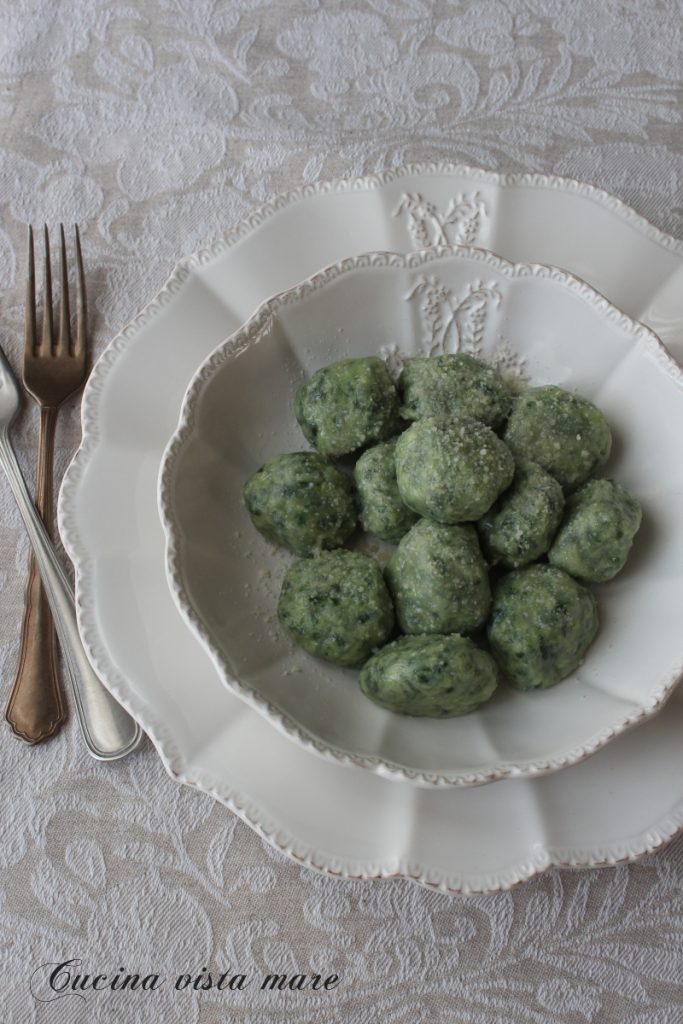The Tuscan gnudi are a typical regional dish. Gnudi (as they call them in Florence) meaning without the homemade pasta around. Because Tuscan gnudi are made with what is the basic filling of ravioli. But also malfatti (as they call them in Siena) because these large dumplings are made by hand, one by one, and are often different, imperfect, and somewhat lumpy. The Tuscan gnudi belong to the poor peasant tradition, and every family keeps and passes down the recipe. Some people add flour to the dough, while others just work them with a lot of flour. I think it also depends a lot on the type of ricotta you use and how soft the mixture is. Then there is the flour, which absorbs differently depending on the brand. The shape? Some make them round, and some make them elongated. My recipe? It’s a real mix, a bit my way, and doesn’t claim originality. I’ll just tell you one thing: make the Tuscan gnudi because they are delicious.
Don’t miss

- Difficulty: Medium
- Cost: Cheap
- Preparation time: 30 Minutes
- Portions: 2 people
- Cooking methods: Stovetop
- Cuisine: Italian Regional
- Seasonality: All seasons
Ingredients
- 9 oz spinach (boiled and well squeezed)
- 9 oz ricotta (dry)
- 1 egg
- to taste salt
- 2 tbsps grated Parmesan cheese
- to taste nutmeg
- 1.4-1.8 oz all-purpose flour (plus more for working the gnudi)
- to taste butter (for seasoning)
- 2 leaves sage (for seasoning)
Tools
- 1 Bowl
- 1 Knife
- 1 Fork
- 1 Slotted Spoon
- 1 Pasta Pot
- 1 Low-sided Casserole
Steps
Finely chop the spinach. In a bowl, mix the spinach well with the ricotta, then add the egg, nutmeg, a pinch of salt, and Parmesan. Work the ingredients well to obtain a soft mixture. Also, add the flour and mix well. With slightly damp hands, form balls about the size of a walnut. Pass them in the flour and place the gnudi on a tray well sprinkled with flour and spaced apart.
Bring plenty of salted water to a boil and cook the gnudi a few at a time, draining them with a slotted spoon as soon as they float to the surface. Transfer them directly to the casserole with the seasoning: for me, simple butter and sage.
To prepare the seasoning, you just need to melt 50 grams of butter with two sage leaves in a low-sided casserole. But if you prefer, you can season the gnudi with a tomato sauce or cook them in broth and serve them with the broth itself.
Notes
If you have a fairly dry mixture, you can prepare the gnudi without adding flour, as many traditional recipes indicate. In this case, it is very important to flour them very well with rice flour, which will act as a protective film, preventing the gnudi from falling apart when dipped in boiling water. I preferred to proceed by adding flour to the mixture according to other versions of the recipe. This made them more solid. Not having experience with the recipe, I preferred not to risk them all breaking once in the water.
This content contains one or more affiliate links.

